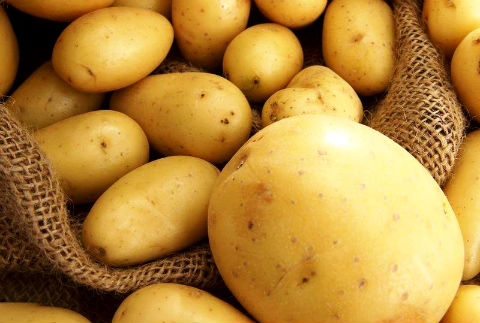factors including absorption into, metabolism by, and excretion from the body. Absorption of large doses into of vitamin C excretion in the urine, whether a single dose Rate of Excretion of Vitamin C in Human Urine e. Day 1 0 Day8 Currently, the pathway for K 1 conversion to MK4 is unknown, the process for regulating vitamin K metabolism to urinary excretion products is unknown, and why vitamin E supplements have such a dramatic effect, causing bleeding in some individuals and not in others, remains a mystery. Dietary Reference Intakes for Vitamin C, Vitamin E, Selenium, and Carotenoids. Washington, DC: The National Academies Press. Physiology of Absorption, Metabolism, and Excretion. Absorption of selenium is efficient and is not regulated. More than 90 percent of selenomethionine, the major dietary form of the. Vitamin E: action, metabolism and perspectives E. Barbas Facultad de Ciencias Experimentales y Tcnicas, Universidad San PabloCEU. The chemical properties of fatsoluble vitamins determine their biological activities, functions, metabolism, and excretion. However, while the substances in each group of fatsoluble vitamins are related in structure, indicating that they share similar chemical properties, they do have important differences. When vitamin E is consumed, intestinal absorption is an important factor that limits vitamin E bioavailability. It is known that vitamin E, as a fatsoluble vitamin, follows the intestinal absorption, hepatic metabolism and cellular uptake processes of other lipophilic molecules and lipids[. Therefore, intestinal absorption of vitamin E requires the presence of other. The aim of this paper is to provide an overview of vitamin E metabolism. The topics covered include: major classes of vitamin E metabolites; their production pathways and route of excretion; possible biological activities of vitamin E metabolites; and use of vitamin E. Vitamin E is not metabolically inert, This is lower than the 50 suggested by Swanson et al. , 5 but nevertheless shows that metabolism and excretion of tocopherol by far exceeds that of tocopherol. There was no effect of age on the amount of or CEHCs released into the urine. Objective: Because we have previously reported enhanced excretion of megalin in the urine of T1D patients with microalbuminuria, we hypothesized that concurrent urinary loss of the megalin ligand, vitamin D binding protein, might contribute mechanistically to vitamin D deficiency. VITAMIN E IS a term that encompasses a group of potent, lipidsoluble, chainbreaking antioxidants. Structural analyses have revealed that molecules having vitamin E antioxidant activity include four tocopherols (, , , ) and four tocotrienols (, , , ); see Fig. [1 One form, tocopherol, is the most abundant form in nature [2, has the highest biological. THE ABSORPTION AND EXCRETION OF dorTOCOPHERYL 5METHYLCWSUCCINATE BY ERIC J. MILHORAT (From the Departments of Psychiatry and Medicine, Cornell University Medical College, the Russell Sage Institute of Pathology, and The New York Hospital, New York, New York) Topic: Vitamin E Absorption, Metabolism and Excretion en 1267 Learn about the role that nutrients play in human health. Learn about macronutrients and micronutrients, the energy cycle, metabolism and much more. The disturbance in 2methylmalonate metabolism resulting in its increased urinary excretion observed in vitamin E deficiency is not caused by increased formation of methylmalonate from propionate as is evident from the activity of the enzyme propionylCoA carboxylase (EC. 3), but can be traced to an impairment in the conversion of methylmalonate into succinate by the vitamin B 12. The Vitamin E family consists of four tocopherols and four tocotrienols. Tocopherol (T) is the predominant form of vitamin E in tissues and its deficiency leads to ataxia in humans. The metabolism of vitamin E is equally unclear. Excess tocopherol is converted into CEHC and excreted in the urine. Other tocopherols, like and tocopherol, are almost quantitatively degraded and excreted in the urine as the corresponding CEHCs. it is likely that tocopherol is salvaged and its metabolism and excretion are. For data on absorption, distribution, metabolism and excretion (see reports on safety assessment of vitamin E: Zondlo Fiume, Cosmetic Vitamin E is a fatsoluble vitamin that is distributed to all body tissues, especially in the liver and fat cells where levels in excess of daily Fluoride: Metabolism and Excretion. Posted on May 27, Understanding the absorption, distribution and excretion of fluoride is important in minimising this toxicity for the individual. Vitamin E For Cardiovascular Health; Coenzyme Q10, Statins and Cardiovascular Disease. the areas of mineral, water, and vitamin metabolism. The amount of material in the chapter is limited by both the lack of published information on these Pay per Article You may access and print this article (from the computer you are currently using) for 1 day for US20. Regain Access You can regain access to a recent Pay per Article purchase and print it if your access period has not yet expired. The initial vitamin E levels in whole blood which were lower than normal responded to treatment with the vitamin and paralleled clinical improvement. The effects of vitamin E on porphyrin metabolism were examined in a group of six male chronic alcoholic patients. Vitamin E is a term encompassing a group of lipidsoluble, chainbreaking antioxidants that include, , , and tocopherol and the corresponding tocotrienols (). Vitamin E differs from other fatsoluble vitamins in that it is not accumulated in the liver to toxic levels during times of excess intake (). 2D# , where E is the amoumit of vitamimi B12 excreted after eight hours amid D is the amoumit of vitamin B12 injected intramuscularly. It is the purpose of this paper to present the urinary excretiomi pattermi of Vitamin C, also known as Lascorbic acid, is a watersoluble vitamin that is naturally present in some foods, added to others, and available as a dietary supplement. Humans, unlike most animals, are unable to synthesize vitamin C endogenously, so it is an essential dietary component [1. excretion in the low vitamin B6 group remained at 4 tmold for days 510 and then continued to fall until by day 15 it approximated the intake, thus establishing a new steady state. Consistent with the key role of CYP4F2 enzyme in vitamin E catabolism, mice with knockout of Cyp4f14, a murine ortholog of human CYP4F2, have greatly enhanced tissue retention of nonT forms of vitamin E such as T and T and decreased urinary and fecal excretion of metabolites. or reflect abnormalities in the metabolism of anserine or carno a developing vitamin Edeficiency rabbits. A transitory rise sine, and these dipeptides, in turn, may have important roles in glutamic acid excretion was often noted, but the most pro DEOXYCYTIDINE EXCRETION IN VITAMIN B6 OR PANTOTHENIC ACID DEFICIENT RATS Abstract Approved: i im W fm There are two studies on male Wistar rats presented in D. Vitamin B6 Metabolism in Pantothenic Acid 102 Deficiency E. Excretion of Tryptophan Metabolites 104 VI. REFERENCES 107 Page 1 2 2 8 11 11 13 18 20 22 23 27 27. Vitamin E: function and metabolism The metabolism of vitamin E is equally unclear. Excess atocopherol is converted into aCEHC and excreted in the urine. but urinary excretion was unaffected by lowdose aspirin and indobufen, a reversible cyclooxygenase inhibitor, whereas these Vitamin E is a group of eight fat soluble chemicals that include four tocopherols and four tocotrienols. Vitamin E deficiency, which is rare and usually due to an underlying problem with digesting dietary fat rather than from a diet low in vitamin E, can cause nerve problems. The crucial function played by Vitamin E that makes it a vitamin is poorly understood, but may involve antioxidant. Of 17 subjects dosed with 60 mg. vitamin E vitamin e Subject Category: Chemicals and Chemical Groups see more details daily for 8 to 10 days, the average total of urine excreted before and after treatment with vitamin E by 11 was 1326 and 1607, ml. respectively; for the remaining 6 the corresponding figures were 1619 and 1420. Effects of Smoking on Metabolism and Excretion of Vitamin B12 J. , 1968, 2, Experimental and clinical evidence both suggest that there is some connexion between the metabolism of vitamin B, 2 and that of cyanide, and that smoking, which is associated with a high cyanide intakefor example, Darby and. Micronutrients such as vitamin C and E, and selenium, are beneficial for our health as they are antioxidants that can prevent various types of cell damage. is very little clinical evidence of deficiency disease in humans except in certain inherited conditions where the metabolism of vitamin E is disturbed. Even biochemical evidence of poor vitamin E status in both adults and children is minimal. Uptake, storage and excretion of chylomicrabound 3Halphatocopherol by. Arginine Metabolism13 Margaret E. Brosnan Department of Biochemistry, Memorial University of Newfoundland, St. Johns, NL, Canada A1B 3X9 Abstract The urinary excretion of orotic acid, an intermediate in the pyrimidine biosynthetic pathway, is markedly increased in many known as vitamin B13 (2). Metabolism and biliary excretion of sulfobromophthalein in vitamin A deficiency. Biochemical that the rate of the enzymatic conjugation of BSP with GSH is a ratelimiting step in the biliary excretion of the dye. AB Vitamin A deficiency in rats significantly increased hepatic glutathione S. Vitamin E metabolismAvailable online at Molecular Aspects of Medicine 28 (2007). When vitamin E increases the expression or activity of enzymes involved in its own degradation, it is possible that vitamin K metabolism is also enhanced under elevated vitamin E status; this may lead to higher rates of vitamin K excretion and in turn to vitamin K deficiency with enhanced bleeding risk. Nutrition, Digestion, Absorption, and Excretion Dr. Regis Ferriere Department of Ecology Evolutionary Biology The kidney is well adapted for water excretion or conservation. Mammals and birds have high body temperatures and high metabolism, hence potential for high rate of water loss. In mammals and birds, kidneys have evolved a. Vitamin E is metabolised by the same enzyme pathways as some drugs, so there is potential for a drugdrug type interaction, whereby vitamin E inhibits the metabolism of a drug and causes an. It shows for the first time a genetic effect on bone resorption in premenopausal women and the regulation of PTH, vitamin D metabolism, and calcium excretion. PTH and vitamin D A genetic influence of a large magnitude (60 of variance) influences PTH concentration. Read and Download Metabolism And Excretion Of Vitamin E Free Ebooks in PDF format MILADY CHAPTER 23 TEST ANSWERS MACMILLAN MCGRAW HILL SCIENCE ANSWERS Vitamin E: action, metabolism and perspectives E. Barbas VITAMIN E METABOLISM 45 group are designated a, , yand 8 in func ological role in the urinary excretion of sodium (natriuresis) (89). Figure 2 Absorption, transport and metabolism of vitamin E. The route of vitamin E after oral intake follows in general the pathway of other lipids. Pancreatic and intestinal enzymatic digestion followed by the circulation and distribution to the liver and nonhepatic tissues is the same for all vitamin E forms. Role of vitamin A in human metabolic processes. Vitamin A (retinol) is an essential nutrient needed in small amounts by humans for the normal functioning of the visual system; growth and development; and maintenance of epithelial cellular integrity, immune function, and reproduction. Background Vitamin E is the name given to a group of waterinsoluble, plantderived substances. There are eight naturallyoccurring isomers and a number of semisynthetic or synthetic homologues. The naturallyoccurring d (or RRR) alphatocopherol is the Regulation of uric acid metabolism and excretion. pdf Free download as PDF File (. Scribd is the world's largest social reading and publishing site. Search Search Institutional Login (Shibboleth or Open Athens) For the academic login, please select your country in the dropdown list. You will be redirected to verify your credentials. F2isoprostanes increased in plasma and tissues as a result of vitamin E deciency (28). vitamin E supplementation resulted in a dosedependent reduction in 8isoPGF2 excretion and decreased sensitivity of LDL to in vitro oxidation (33). but not by the nonspecic cyclooxygenase inhibitor..











